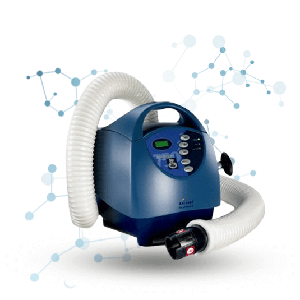Bair Hugger Overview
 What is a Bair Hugger device, and why are patients suing the device’s maker, 3M? We’ll cover everything you need to know in our Bair Hugger overview.
What is a Bair Hugger device, and why are patients suing the device’s maker, 3M? We’ll cover everything you need to know in our Bair Hugger overview.
Since 1987, more than 180 million hospitalized patients used Bair Hugger warming devices. Bair Hugger forces heated air through tubes inside an inflatable blanket covering a patient during surgery. Forced air warming maintains patient normothermia (normal body temperature) during surgery. Hospitals use Bair Hugger therapy in a wide variety of settings where it plays a critical, life-saving role.
Bair Hugger patient warming systems can cause serious complications during orthopedic procedures. In fact, several patients with serious Bair Hugger infections required multiple surgeries or even limb amputations. Claimants say that 3M knew about Bair Hugger infection risks and didn’t warn the public, so now, they’re suing the company for negligence.
Bair Hugger Overview: Deep-Joint Orthopedic Surgery Risks
Bair Hugger blankets are designed to improve patient comfort and warmth during surgery. These blankets utilize pressure points to prevent heat from reaching areas that could cause pressure sores or burns on patients. Since surgeons discard Bair Hugger warming blankets immediately after surgery, infections can’t be transmitted between patients. However, a serious Bair Hugger infection may develop after orthopedic surgery.
While Bair Hugger warms surgery patients, it also releases air below the operating table and throughout the room, spreading bacteria. During hip or knee replacement surgery with prolonged deep joint exposure to airborne contaminants, this poses a serious risk. Bacteria grows quickly within an exposed deep joint wound, causing pain, fatigue, fever and swelling. Any bacteria touching artificial hip or knee implants made from metal or plastic forms a biofilm that instantly binds with the device. This biofilm helps infection grow rapidly due to its antibiotic-resistant properties. The most common infection is Methicillin-resistant Staphylococcus Aureus (MRSA), a strain of staph that’s resistant to most antibiotics.
Bair Hugger Overview: FDA 510(k) Program Approval
The Food and Drug Administration initially approved 3M’s Bair Hugger warming system in 1987 through its 510(k) program. The 510(k) program fast-tracks products to market that are comparable to “equivalent” approved devices. Therefore, 510(k)-approved medical devices don’t undergo clinical testing — including patient safety trials.
Augustine Medical first owned Bair Hugger, winning 12 different 510(k) program clearances from 1990-2002. After the company changed its name to Arizant, the FDA issued two more Bair Hugger clearances from 2004 to 2006. Even after 3M acquired Arizona in 2010, the FDA still didn’t require any Bair Hugger clinical trials or safety testing. Among the FDA’s numerous adverse event reports are third-degree burns, equipment malfunctions, and bacteria spreading to the patient’s deep joints. While some of these reports can be attributed to human error, the Bair Hugger warming system has inherent bacteria-spreading properties. A fault in Bair Hugger’s design helps spread harmful bacteria to the patient’s exposed deep joints, specifically during orthopedic surgery.
Bair Hugger Overview: Life-Threatening Complications
Deep joint infections are the most frequently reported and serious Bair Hugger complications. Deep joint infections are more likely to spread after artificial knee or hip replacement surgery. If a patient contracts MRSA post-surgery, typical antibiotic regimens don’t work and a deeply rooted infection can be life-threatening. Medical costs for treating MRSA are often enormous. One study states, “The costs of treating an infection after THR (total hip replacement) are reported to be at least $50,000 US dollars per patient.” With severe complications (such as limb amputation), those costs can soar even higher.
An infected patient must undergo a two-step treatment procedure. First, a surgeon removes the infected prosthesis. Then, the surgeon uses debridement to remove any dead or damaged tissue from the hip (or affected joint). When successful, this treatment is expensive, painful, and lengthy; but if it fails, the results can be devastating.
Some painful and life-altering deep joint infection side effects include:
- Hospitalization to treat infection
- Severe pain
- Permanent disability
- Amputation
- Death
Bair Hugger Overview: Lawsuits Are Currently Underway
Many deep-joint infection patients have high medical expenses due to repeated surgeries and even limb amputations. As a result, at least 14 product liability lawsuits are now pending against Bair Hugger’s manufacturer, 3M. Unfortunately, infections often occur years after surgery. Hospitals began using Bair Hugger patient warming systems in 1987, so more cases may come forward.
Current plaintiffs allege that using Bair Hugger devices disrupts the operating room’s normal air flow. This in turn circulates harmful bacteria through the air where it can enter surgical incisions, contaminating the patient’s deep joints. Plaintiffs also claim 3M knew about serious Bair Hugger infection risks, but failed to warn healthcare providers and consumers. Evidence also suggests that the manufacturer attempted to conceal and discredit scientific data illustrating the forced-air warming system’s risks.
Check eligibility for compensation.
If you or a loved one developed severe infections after using the Bair Hugger forced warming air device during hip or knee replacement surgery, you may be entitled to compensation from the manufacturer. Request your free case evaluation now to see if you may qualify.



